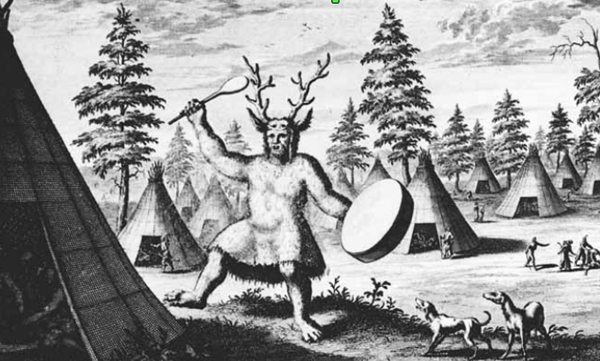by Çağıl Çayır – Historian
It is not only Nordic mythology, which was only written down in later times, that has direct references and parallels to Siberian, especially Turkic and Mongolian shamanism. The earliest archaeological evidence from Europe and Asia also proves their ancient similarities.
The comparable finds reach back to the time of the so-called Venus figurines from 12,000 to 40,000 years ago. The finds cover the gigantic area from Siberia to Spain. Their wide distribution is recognized as evidence of cultural contacts and shared beliefs.

Image description [over 9,000-year-old deer antler mask from Bedburg-Königshoven, Germany. Photo: Markus Wild/RGZM (CC BY 3.0)]
But there is also astonishing evidence from the period between 9,000 and 7,000 years ago that links the peoples and cultures of East and West. One of the greatest similarities is the so-called elk or deer cult. Numerous finds, especially from Europe and North Asia, show parallels.
For example, two over 9,000 years old deer antler masks were found in Bedburg-Königshoven in North Rhine-Westphalia in Germany, which have been compared with Siberian shaman masks. Comparable finds from Europe can be found in eastern and northern Germany, Denmark, England and further more. The Ukrainian archaeologist Nataliia Mykhailova has been studying the subject in detail for several years.
In 2019, an article was published in Denmark that explored the question of what the Danes believed in before Norse mythology. Danish Stone Age specialist Mikkel Sørensen drew attention to a shaman drumstick found in a 7,000-year-old shaman grave from Vedbæk in Denmark. Similar finds are known from Siberia.

Image description: [Siberian shaman from the 17th century, image: Nicolaas Witsen].
Finally, there are many other parallels between the cultures that extend over the centuries and millennia into the present and future. From burial rites and monuments to fairy tales and legends in Asia and Europe. It is therefore important not to look at the cultures separately, but rather together and holistically to understand their origins and development. It is interesting to note that shamanism, which was widespread in prehistoric times, still lives on today in Siberia and Mongolia, but also in North and South America, as well as in Africa and Australia. Shamanism has even become a global trend again.
The ancient and impressive parallels in the four world directions remind us today of the ancient similarities between peoples and cultures. Contrary to their historical-political division in the modern age. Only now can we devote ourselves to such testimonies with an open mind. At least as long as political conflicts and wars do not again restrict and distort historical research. This makes it even more important to use the current freedom of research and technology of our time to follow the common signs of the past. The shamans of East and West have left us an eternal heritage for this.
 Çağıl Çayır studied history and philosophy at the University of Cologne and is the author of „Runes in Eurasia. Über die apokalyptische Spirale zum Vergleich der alttürkischen und ‚germanischen‘ Schrift’“. He is the founder of „Kulturakademie Çayır“. His work has been published internationally in various science and mass media.
Çağıl Çayır studied history and philosophy at the University of Cologne and is the author of „Runes in Eurasia. Über die apokalyptische Spirale zum Vergleich der alttürkischen und ‚germanischen‘ Schrift’“. He is the founder of „Kulturakademie Çayır“. His work has been published internationally in various science and mass media.
Also interesting
– History –
Findings in Denmark: Was Germanic-God „Odin“ a Turk?
In 2020, a treasure hunter unearthed a magnificent gold treasure in a village called Vindelev in Denmark, dating from the mid-5th century, right from the middle of the Migration Period.

































































